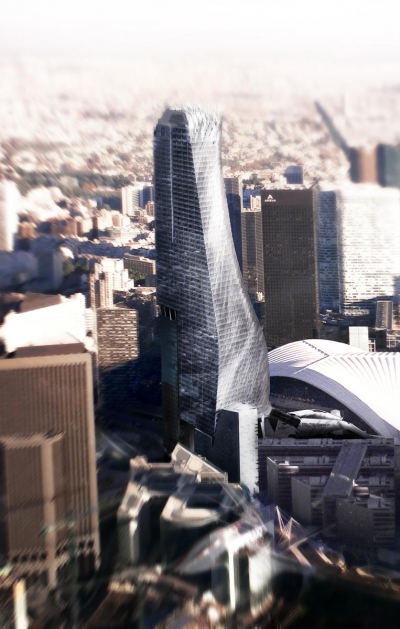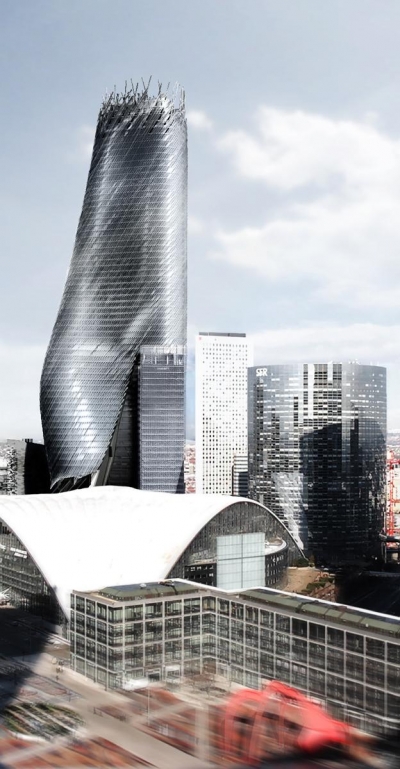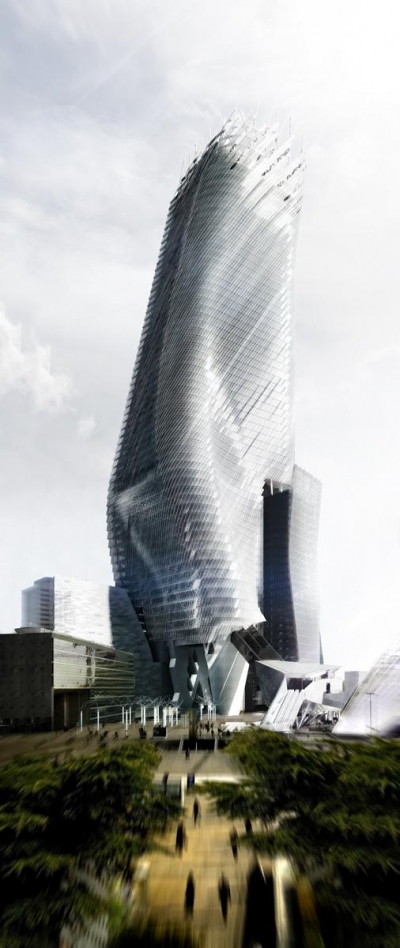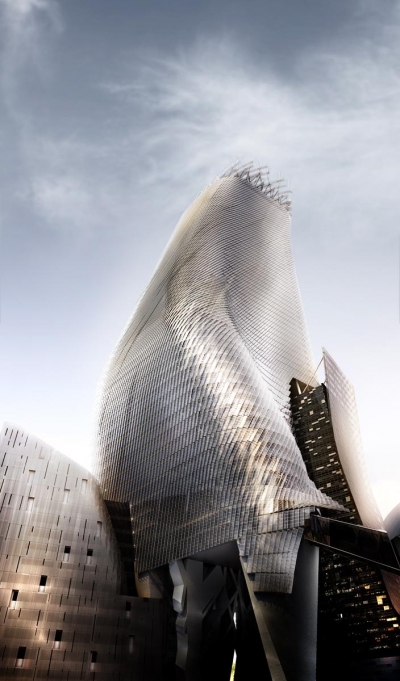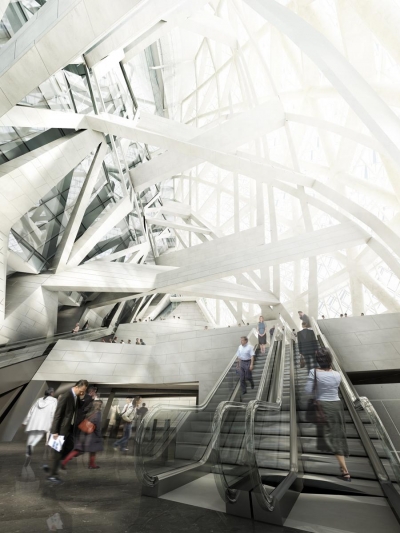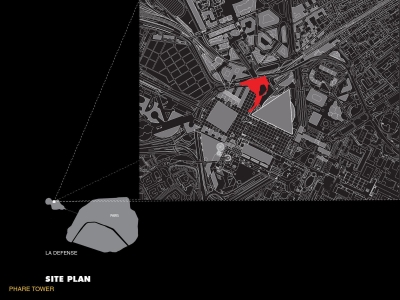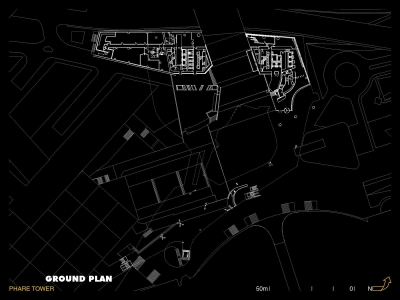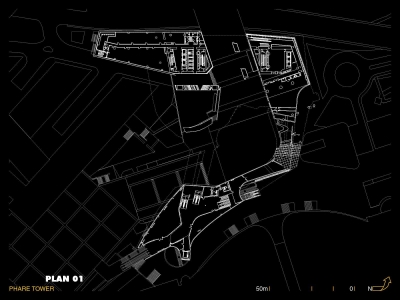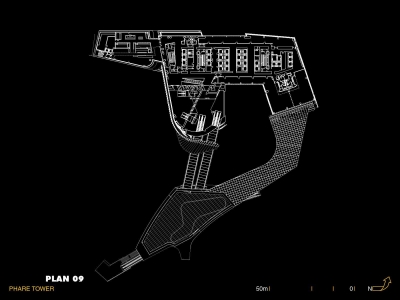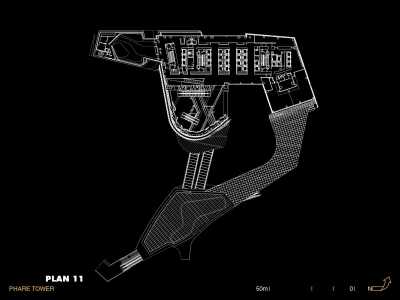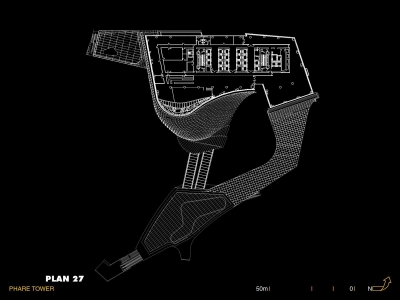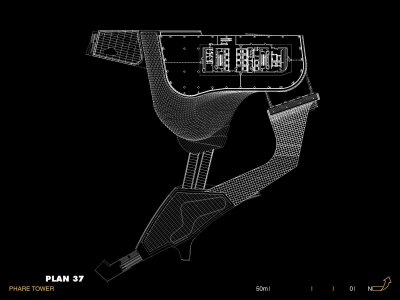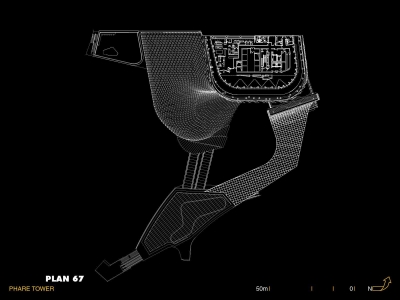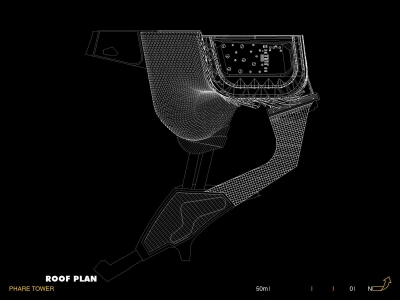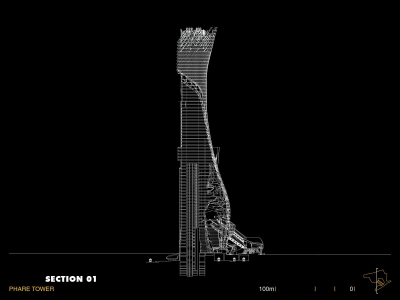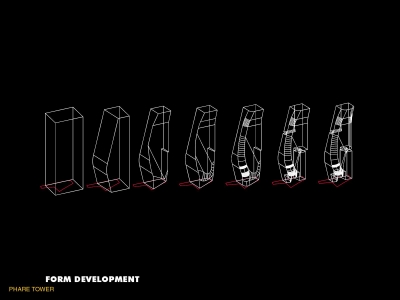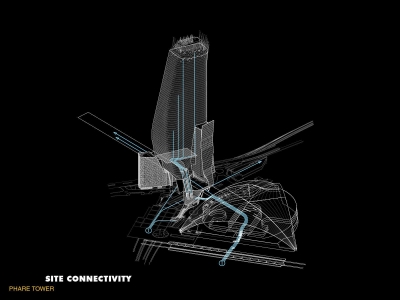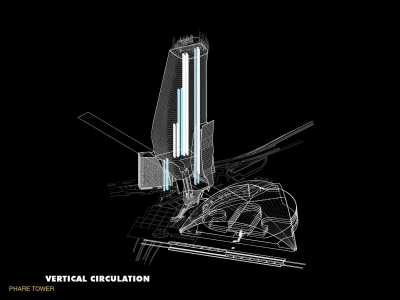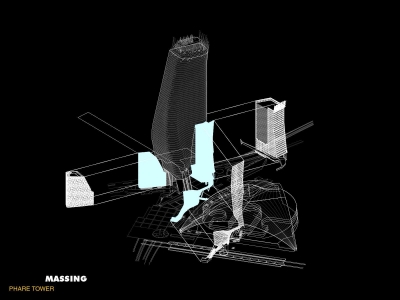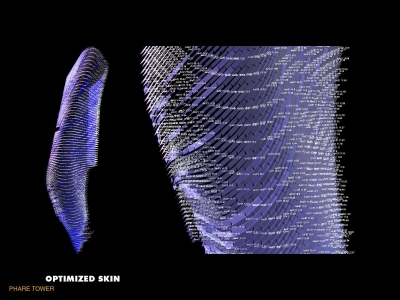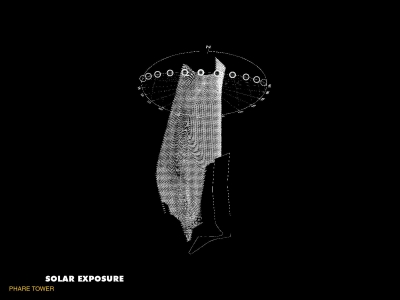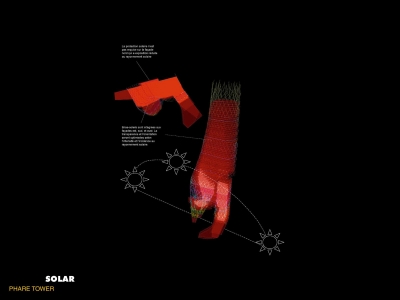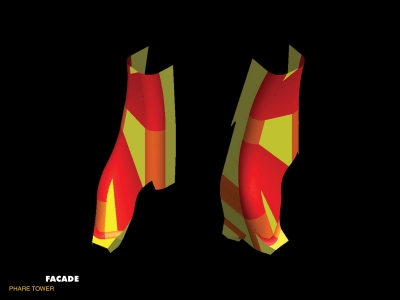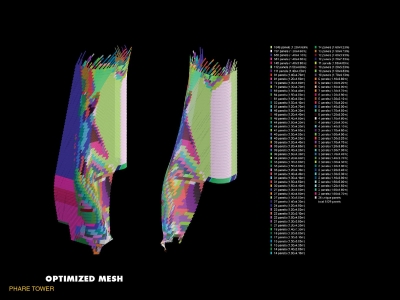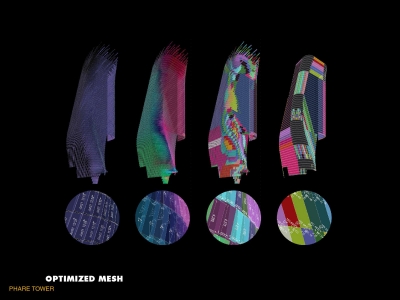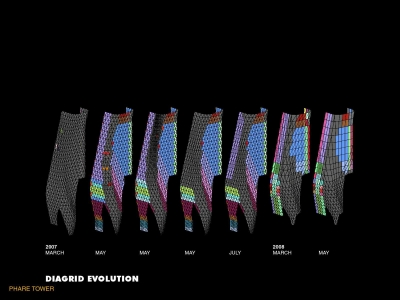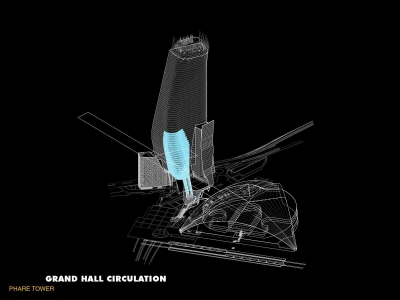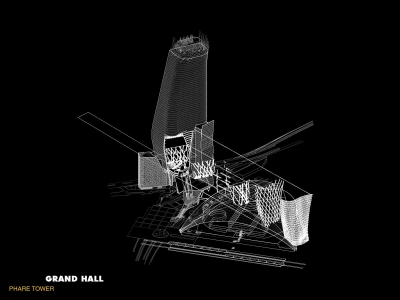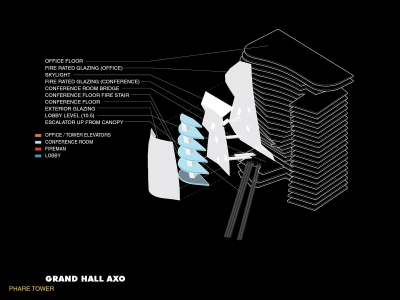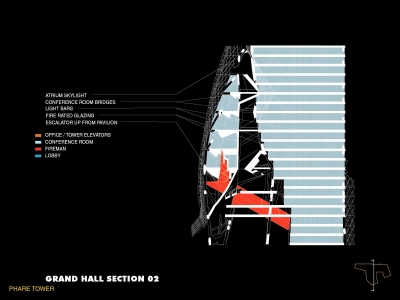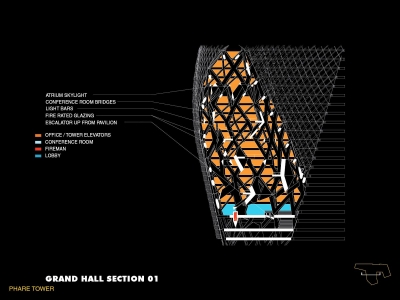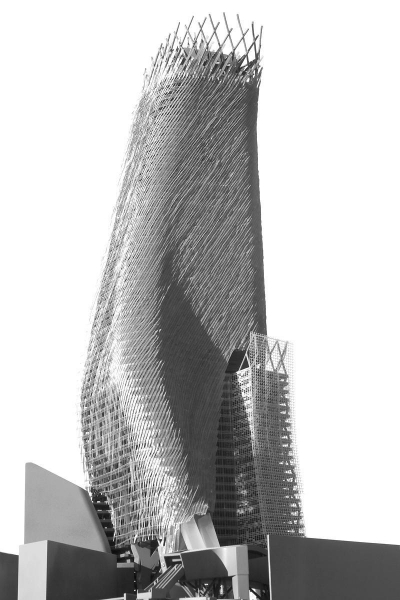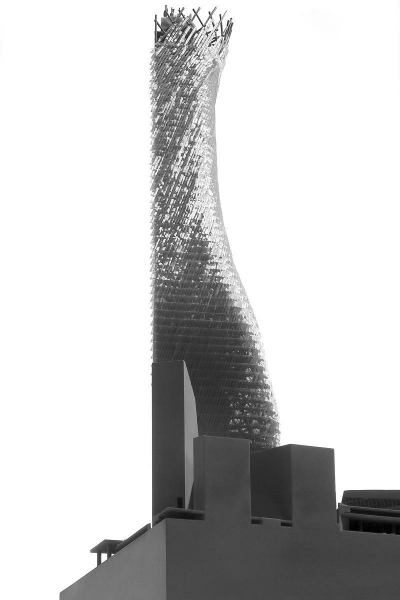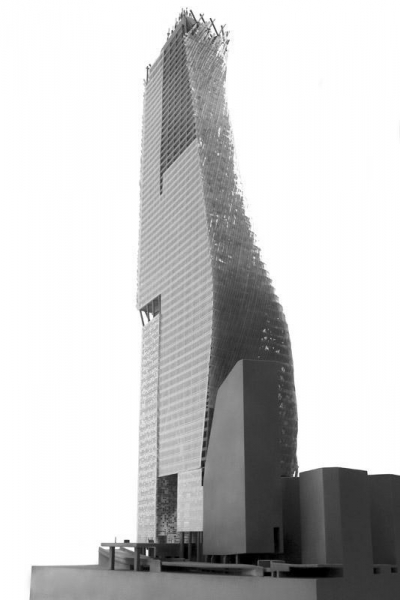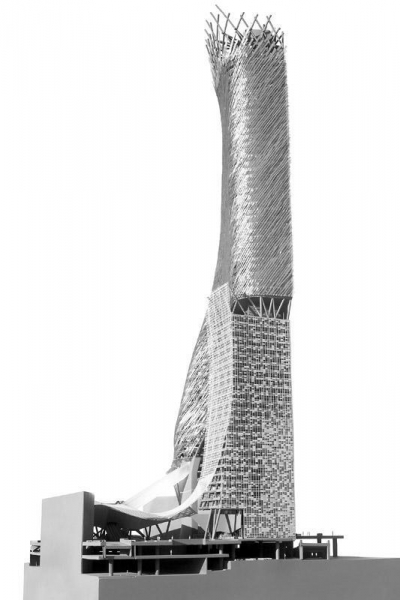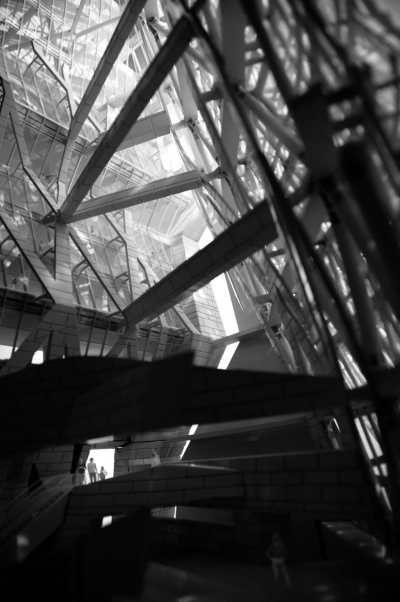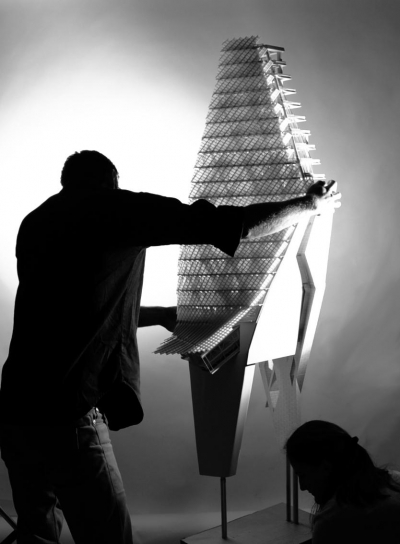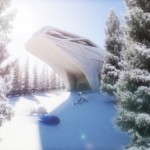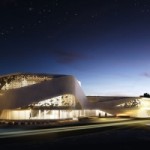
Project: Phare Tower
Designed by Morphosis Architects
Size: 1,767,273 gross sqf / 164,180 gross sqm
Location: La Defense, France
Website: morphopedia.com
The Phare Tower designed by Morphosis Architects comes as the first stage of a major redevelopment of the Paris business district La Défense. For more images as well as architects description continue after the jump:
From the Architects:
Between 1958 and 1989, high-rise buildings (banned in the historic center of Paris) were constructed just outside the city boundary, forming the business district of La Défense two miles west of Paris. The Phare Tower (phare being French for beacon or lighthouse) marks the first stage of a major redevelopment of the district. La Défense is currently a zone of discrete, isolated buildings amid blank plazas—essentially a nonsite.
The tower emerges from its irregular site, defined by a neighboring motorway and a rail link, and bisected by an existing pedestrian walkway. It is located between the 1989 Grande Arche de la Défense and the 1958 CNIT building, the former exhibition hall of the National Inter-University Consortium for Telecommunications, with an architecturally significant glass façade, designed by Jean Prouvé. These disparate elements, crowded together and seemingly unrelated, provide an opportunity to mend the site. The site strategy thus synthesizes the programmatic, physical, and infrastructural complexities to connect the surrounding urban space and create a coherent sense of place where none previously existed.
At the levels of urbanism and circulation, the scheme complements existing plans to transform the CNIT into a center for commerce and recreation. Circulation is directed from the existing transit hub below grade, through the renovated CNIT facilities, and into the tower’s public spaces via a pavilion. The pavilion connects to the Place Carpeaux, and transitions from horizontal to vertical, becoming an integral element in the tower’s form. Glazed exterior escalators soar 35 meters from the pavilion to the tower’s ninth-floor lobby, transporting approximately eight thousand pedestrians each day. As the visitor rides up the escalators to the Grand Hall, the fully glazed envelope reveals views of the traffic passing underneath, as well as of Parisian monuments in the distance.
Rather than an isolated and autonomous tower, the building is a hybrid structure. The 300-meter tower straddles the site to meet the ground as a tripod. It comprises one splayed structural leg, two occupiable legs (the Trapezium, to the west, and the East Building), as well as a pavilion that engages the surrounding context and transforms the public space of the plaza. The two occupiable legs frame a 24-meter-wide by-28-meter-tall void in the tower’s base, creating a monumental urban gateway, which maintains view corridors toward the CNIT and toward Courbevoie and allows pedestrian traffic to flow directly underneath the building.
As it rises from its tripod base, the tower’s asymmetric profile swells slightly to accommodate the soaring Grand Hall, then becomes more slender in response to wind load, and finally tapers off to a thicket of wind turbines, antennas and hair-like structures on the roof. The tower appears to shift continually, distinct from different vantage points—not a single image but a dynamic structure that responds to its site, environment, and performance requirements. At its base, the building’s skin opens, exposing a 250-foot-high Grand Hall. The Grand Hall becomes the center for all vertical transportation. From the Hall’s security checkpoint, people transition to double-deck banks of express elevators serving the office tower. On the 66th floor, a sky restaurant and a panoramic terrace, offering spectacular 270-degree views, are open to the public. Overall, the project comprises 146 988m2 or 1 582 166 ft2 of net surface area and 164 185 m2 or 1 767 273 ft2 of gross surface area.
Technologies integrated into the Phare Tower harness the wind for the production of energy and selectively minimize solar gain while maximizing glare-free daylight. The tower is crowned with a cluster of antennas and a wind farm of turbines that harvest energy—a metaphorical garden in the sky. Both the form and the orientation of the building respond to the path of the sun. The planar, clear-glazed north façade maximizes interior exposure to year-round natural daylight. A curvilinear second skin of diagonal stainless steel mesh panels wraps the tower’s continuous south, east, and west glazed façades to minimize heat gain and glare and maximize energy efficiency.


